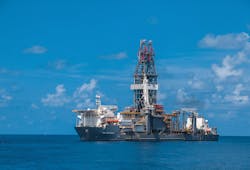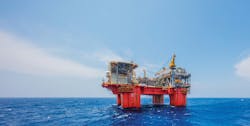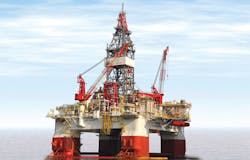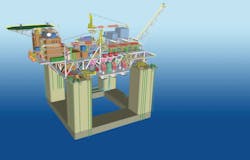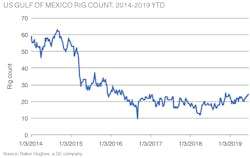A new market has emerged in the Gulf of Mexico: One that is smaller than before the downturn, and driven by new and emerging players.
Since 2014, a number of larger operators – both majors and independents – have left the Gulf or reduced their E&P activities there, as part of a larger move to less expensive onshore shale and unconventional reserves.As oil prices have recovered in recent years, offshore activity has ramped back up in several regions. But E&P activity in the US Gulf remains below pre-downturn levels.
Still, there is activity, and it is increasingly being driven by smaller and mid-sized operating companies, often backed by private equity. Many of these companies have seized the opportunity offered by the downturn to enter the market through asset acquisitions, partnerships, joint ventures and mergers. Examples include the Talos Energy-Stone Energy merger, which enabled Talos to gain assets in the deepwater US Gulf; Kosmos Energy’s acquisition of Deep Gulf Energy, giving Kosmos deepwater assets in the Gulf; Fieldwood Energy’s acquisition of Noble Energy’s Gulf assets; and Cox Oil Offshore’s acquisition of Energy XXI Gulf Coast Inc.
A recent Wood Mackenzie study examined the role of these smaller, “nimbler” offshore players. The study, entitled “Does private equity have a future in the deepwater US Gulf of Mexico?,” explored this changing dynamic in which private equity-backed companies are now taking the lead in the US GoM.Michael Murphy, research analyst with Wood Mackenzie’s GoM team, and lead author of the analysis, said: “With the region shifting from a period of expansion to a period of capital restraint, private equity-sponsored companies, focusing on investment discipline and efficiently commercialising prospects, have shown what it takes to compete.”
Private equity-backed companies have shown a willingness to take a countercyclical investment approach in the Gulf, says Wood Mackenzie. According to its analysis, forecast development capital spend in the GoM is set to double from $0.5 billion in 2017 to $1.0 billion in 2020. Meanwhile, independents’ development capex is projected to remain flat over the same period, at $1.4 billion.
Although the majors represent the bulk of projected capital spend in the GoM for the foreseeable future, private equity-backed companies will play a larger role in the region long term, the study indicates.“Just as private equity’s entrance into the US Lower 48 brought fresh impetus and renewed direction to exploration and production, private equity is bringing a different operational approach to the Gulf of Mexico,” Murphy said. “Capitalizing on lower cost structures and focusing on quicker paybacks, these smaller, nimbler private equity-backed outfits have shown an ability to turn discoveries into dollars at a faster clip than their competition.”
The average time from discovery to first oil for private equity-backed companies has been around three years for fields sanctioned since 2010, compared to around six years for most majors and independents. Moreover, many smaller players in the GoM have been able to add production at a lower cost than their larger counterparts. In fact, the average full-cycle capex in deepwater GoM now stands at around $12/boe for private equity-backed companies, about 40% lower than independents.
Private capital is also playing a critical role in the rejuvenation of brownfield assets in the GoM, the study notes. The scale of opportunity for private capital is exemplified by EnVen’s redevelopment of its Brutus and Glider deepwater assets it, which it acquired from Shell in late 2016. By targeting previously bypassed pay, EnVen has been able to increase production from these assets by nearly 30% from 2016 to 2018, an increase of approximately 18 thousand boe (kboe) per day to 23 kboe per day.
The biggest prize to be had, WoodMac says, is in the development of ultra high-pressure (HP) fields. LLOG’s increased working interest in the ultra HP Shenandoah field following the Cobalt bankruptcy demonstrates its willingness to take on larger risks as the value of its assets rival those of mid-sized independents. While the development of the technology to unlock ultra HP reservoirs is ongoing, it provides potential growth options with the nearby Yucutan and Coronado fields as examples.“Ultimately, the ability to exploit untapped reservoirs will separate the players from the pretenders,” Murphy said. “Ultra-high pressure reservoir development offers the potential for higher growth, but the proof of concept remains to be seen. However, infrastructure-led exploration has provided companies with economic development opportunities. Recently, companies such as LLOG, Talos Energy, and Deep Gulf Energy have shown that value is there for those with the ability to execute and the willingness to take the risk.”
Increased exploration
Late last year, Wood Mackenzie predicted that exploration activity in the US Gulf would increase by 30% in 2019. The firm predicted that large international operating companies such as Shell and Chevron will still lead the way, but the firm also noted that the actual growth in exploration will come from more recent entrants into the Gulf, including Kosmos Energy, Equinor, Total, Murphy, and Fieldwood.
Drilling activity is picking up in both shallow water and deepwater Gulf, and the mid-sized operators are leading the way. Otto Energy has entered into a joint venture with Talos Energy to drill the Bulleit appraisal well in Green Canyon block 21, in approximately 1,200 ft (366 m) of water. If successful, the well will be completed and tied back to the Talos Energy-owned and operated facility in Green Canyon block 18 approximately 10 mi (16 km) away.
Talos has also agreed with Fieldwood Energy to drill the Orlov prospect in Green Canyon block 200. If successful, the well would be completed and tied-back to the Fieldwood-operated Bullwinkle fixed-leg production platform in Green Canyon block 158.
Meanwhile, shallow-water operator GulfSlope Energy reports that the Bureau of Ocean Energy Management has approved its exploration plan for the Corvette prospect in the Vermilion Area, South Addition blocks 375 and 376. The company says that it intends to apply for the permit to drill and execute a rig contract.Still, the key majors in the Gulf – Shell and Chevron – are also busy advancing their plans. In April, Shell announced that it had made a discovery at the Blacktip prospect in the deepwater US Gulf. Located in Alaminos Canyon block 380 in about 6,200 ft (1,890 m) of water, Blacktip is a Wilcox discovery in the Perdido thrust belt, about 30 mi (48 km) from the Perdido platform and Whale discovery.
Shell says that the Blacktip exploration well encountered more than 400 ft (122 m) net oil pay with good reservoir and fluid characteristics. Shell says that the Blacktip discovery adds to its Paleogene exploration success in the Perdido area, and that the well is currently being deepened to further assess the structure’s potential. Blacktip is operated by Shell and co-owned by Chevron, Equinor, and Repsol.
Thus, by some metrics, drilling activity is up in the Gulf of Mexico, at least compared to recent years. Utilization of the marketed US GoM rig fleet has increased from 76% in April 2018 to nearly 81% in April 2019, according to IHS Markit. But, this increased drilling activity should be placed in context, says Cinnamon Edralin, senior offshore rig market analyst for IHS Markit. “Unfortunately, this is a factor of a smaller marketed supply rather than an increase in the number of contracted units,” she observes. Edralin noted that over the past year, the marketed supply fell by four, while the contracted count fell by one. However, when taking a closer look by rig type, “jackups have fared the best in terms of contracting, averaging 11.9 contracted units versus 11.0 a year ago,” she said. Thus, for the first time in a long time, shallow-water drilling is overtaking deepwater drilling in the Gulf. As further testament to that fact, Edralin notes that the utilization of semisubmersible rigs decreased from 4.0 to 2.8, and drillships fell from 19.3 to 18.5 over the same time period.
Buyer’s market
Lease Sale 252, held in March, provided further evidence of this new Gulf market. While the lease sale generated $244,299,344 in high bids, the number of companies bidding on those leases declined as compared to other recent lease sales.
“We saw a modest increase in overall spend, but it was outpaced by the increase in acreage leading to lower amount per acre, furthering our hypothesis that it is a buyer’s market in the Gulf of Mexico,” said William Turner, senior research analyst at Wood Mackenzie. “The number of companies participating has thinned out,” Turner added. “It seems those left in the Gulf of Mexico are committed to the region and taking this opportunity to quietly strengthen their prospect inventory.”
One of the most interesting details of the sale, Turner noted, were the “unique partnerships” between majors and smaller players like Kosmos with Equinor, Fieldwood with Chevron, LLOG with BP, and Talos with EcoPetrol. “This demonstrates a shrinking pool of partners, but also an increased willingness of the majors to partner with these more nimble players,” Turner said.
Chevron’s Anchor
The key project being considered for final investment decision this year in the Gulf is Chevron’s Anchor project in Green Canyon block 807. Discovered in the Wilcox play in 2014, Anchor is located approximately 225 km off the coast of Louisiana in more than 1,500 m of water. Additional prospective resources have been identified in the Anchor vicinity, strengthening the potential of the asset.
Anchor, which has an operating pressure of 20 ksi, would be the first ultra-high-pressure project in the world to reach FID in the Gulf. FID at Anchor would be the culmination of more than a decade of multiple joint industry research and development projects to design kit that can safely produce at 20 ksi. The current limit is 15 ksi.
“Anchor will be an important one to watch,” said Turner. “The sanction of Anchor will be a significant milestone for Chevron, Total and Venari, but also mark a crucial point for the offshore industry as it enters the final frontier in deepwater development.”
Success at Anchor is expected to lead to the next wave of mega-investment in the Gulf, as several 20 ksi projects are waiting to follow its lead. Wood Mackenzie believes that if Anchor moves forward, more than $10 billion of investment could flow into the region.
“Proof of concept at Anchor, and more certainty around facilities to serve as hosts, will surely increase interest in discovered fields,” Turner said. “We expect it will also invite more exploration for ultra-high-pressure targets over the next couple of years. Even so, with higher technical risk and higher breakevens, market conditions would have to align for it to become a reality.”
BP remains active
BP has approved a major expansion at the Atlantis field in the US Gulf of Mexico and has also identified significant additional oil resources that could create further development opportunities around the production hubs it operates in the region.
BP says that the $1.3-billion Atlantis Phase 3 development is the latest example of its strategy of growing advantaged oil production through its existing production facilities in the Gulf. The company says that approval for this latest development comes after recent breakthroughs in advanced seismic imaging and reservoir characterization revealed an additional 400 MMbbl of oil in place at the Atlantis field.
Application of the same technology and analysis has now identified an additional 1 Bbbl of oil in place at the Thunder Horse field. Elsewhere, two new discoveries near the Na Kika production facility could provide further tieback development opportunities.
Bernard Looney, BP’s Upstream chief executive, said: “BP’s Gulf of Mexico business is key to our strategy of growing production of advantaged high-margin oil. We are building on our world-class position, upgrading the resources at our fields through technology, productivity and exploration success.”
Looney added: “These fields are still young – only 12% of the hydrocarbons in place across our Gulf portfolio have been produced so far. We can see many opportunities for further development, offering the potential to continue to create significant value through the middle of the next decade and beyond.”
Atlantis Phase 3 will include the construction of a new subsea production system from eight new wells that will be tied into the current platform, 150 mi south of New Orleans. Scheduled to come onstream in 2020, the project is expected to boost production at the platform by an estimated 38,000 boe/d gross at its peak. It will also access the eastern area of the field where the advanced imaging and reservoir characterization identified additional oil in place.
Starlee Sykes, BP’s regional president for the Gulf of Mexico and Canada, said that: “Atlantis Phase 3 shows how our latest technologies and digital techniques create real value – identifying opportunities, driving efficiencies and enabling the delivery of major projects. Developments like this are building an exciting future for our business in the Gulf.”
The company says that its proprietary algorithms enhance a seismic imaging technique known as Full Waveform Inversion (FWI), allowing seismic data that would have previously taken a year to analyze to be processed in only a few weeks. Application of this technology and reservoir characterization has now identified a further 1 Bbbl of oil in place at the Thunder Horse field.
BP says that its development of leading seismic acquisition and imaging systems is a result of sustained investment in technology and high-performance computing. Following a successful field trial at the Mad Dog field, further advanced seismic imaging with ocean bottom nodes and its proprietary Wolfspar seismic acquisition source is being planned for Thunder Horse and Atlantis to better understand the reservoirs. Wolfspar uses ultra-low frequencies during seismic surveys, allowing geophysicists to see deeper below salt layers and enabling better planning of where to drill wells.
BP also announced two oil discoveries in the Gulf of Mexico, at the Manuel and Nearly Headless Nick prospects.
The Manuel discovery is located on Mississippi Canyon block 520, east of the BP-operated Na Kika platform. The well encountered oil pay in high-quality Miocene sandstone reservoirs. BP is expecting to develop these reservoirs via subsea tieback to the Na Kika platform. BP’s partner in the Manuel discovery is Shell, which holds a 50% working interest.
BP also has a stake in the Nearly Headless Nick discovery located on Mississippi Canyon block 387, operated by LLOG. The well encountered oil pay in high-quality Miocene sandstone reservoirs and is expected to be tied back to the nearby LLOG-operated Delta House facility. BP’s partners in the Nearly Headless Nick discovery include LLOG, Kosmos Energy Ltd, and Ridgewood Energy. BP holds a 20.25% working interest.
Over the last five years, BP’s net production in the Gulf of Mexico has increased by more than 60%, rising from less than 200,000 boe/d in 2013 to more than 300,000 boe/d today. The company is currently the top oil producer in the Gulf and anticipates its production growing to around 400,000 boe/d through the middle of the next decade.
The growth will be supported by recent project startups, including Thunder Horse Northwest and Thunder Horse South expansions and the Thunder Horse Water Injection project, as well as the addition of a second platform (Argos) at the Mad Dog field, which is on budget and on schedule to come online in late 2021.
Future potential developments at BP’s offshore fields in the Gulf include Atlantis Phase 4 and 5, further developments at Thunder Horse, Na Kika subsea tiebacks and Mad Dog field extensions.
Hess keeps the faith
Other key Gulf operators are maintaining their confidence in the region. At the recent Offshore Technology Conference in Houston, Gerbert Schoonman, Vice President, Global Production—Offshore, Hess Corp., affirmed his company’s dedication to E&P in the US Gulf.
In his presentation entitled “Keeping the Faith,” Schoonman stated that offshore and deepwater will remain critical to meeting future energy demand.
Schoonman conceded that at present, there are not too many new projects being developed in the Gulf of Mexico. “But we have the opportunity to change that,” he said. New seismic technologies are can image hydrocarbon reserves below the salt layers, drilling costs have come down, and operators are turning to standardized production facilities. With these new technologies and cost efficiencies now in play, “we think that there will be a lot of projects in the Gulf of Mexico in the future.”
“We are optimistic about the Gulf,” Schoonman said. He noted that Hess has been among the top five players in the last two lease rounds in the US Gulf of Mexico, in terms of acquiring acreage. “So we are putting our money where our mouth is.”
At present, drilling and other work is continuing at the Tubular Bells field, and at the nearby Esox prospect in the Gulf of Mexico. If successful, the Esox prospect could become another high-return tieback for Hess, Schoonman said. “We believe in offshore and we believe in the Gulf of Mexico,” Schoonman said in his concluding remarks. •
About the Author
Bruce Beaubouef
Managing Editor
Bruce Beaubouef is Managing Editor for Offshore magazine. In that capacity, he plans and oversees content for the magazine; writes features on technologies and trends for the magazine; writes news updates for the website; creates and moderates topical webinars; and creates videos that focus on offshore oil and gas and renewable energies. Beaubouef has been in the oil and gas trade media for 25 years, starting out as Editor of Hart’s Pipeline Digest in 1998. From there, he went on to serve as Associate Editor for Pipe Line and Gas Industry for Gulf Publishing for four years before rejoining Hart Publications as Editor of PipeLine and Gas Technology in 2003. He joined Offshore magazine as Managing Editor in 2010, at that time owned by PennWell Corp. Beaubouef earned his Ph.D. at the University of Houston in 1997, and his dissertation was published in book form by Texas A&M University Press in September 2007 as The Strategic Petroleum Reserve: U.S. Energy Security and Oil Politics, 1975-2005.
